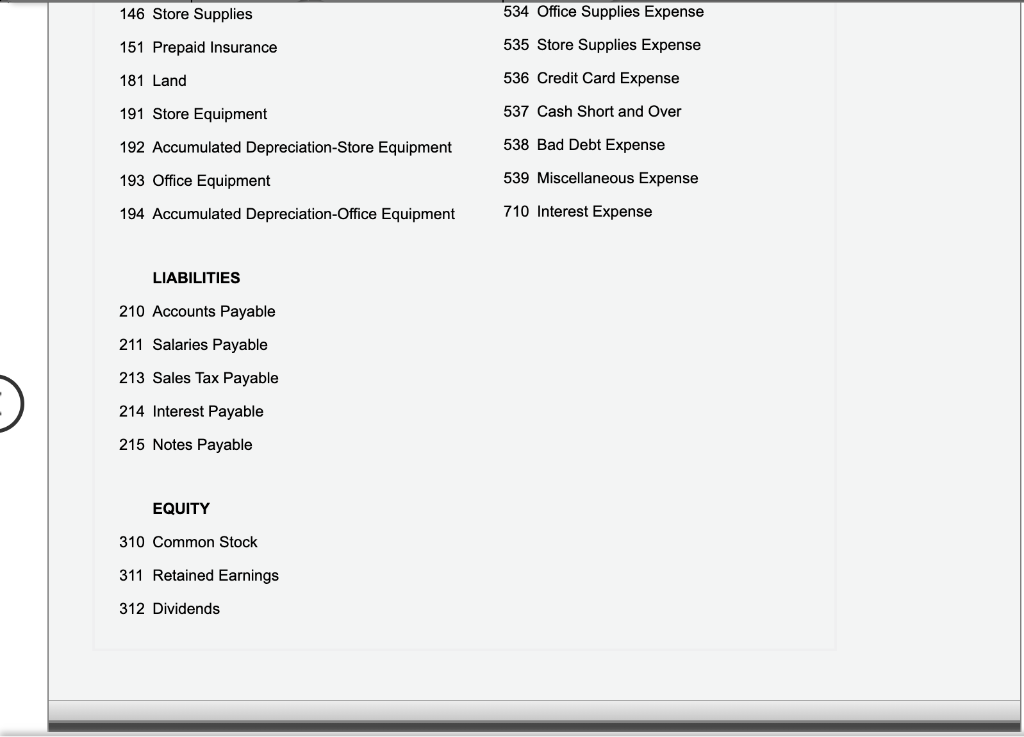Answered step by step
Verified Expert Solution
Question
1 Approved Answer
I need answers rest of them!!! The following transactions were completed by Irvine Company during the current fiscal year ended December 31: Feb. 8 Received








I need answers rest of them!!!
The following transactions were completed by Irvine Company during the current fiscal year ended December 31: Feb. 8 Received 45% of the $18,700 balance owed by DeCoy Co., a bankrupt business, and wrote off the remainder as uncollectible. May 27 Reinstated the account of Seth Nelsen, which had been written off in the preceding year as uncollectible. Journalized the receipt of $7,270 cash in full payment of Seth's account. Aug. 13 Wrote off the $6,360 balance owed by Kat Tracks Co., which has no assets. Oct. 31 Reinstated the account of Crawford Co., which had been written off in the preceding year as uncollectible. Journalized the receipt of $3,975 cash in full payment of the account. Dec. 31 Wrote off the following accounts as uncollectible (compound entry): Newbauer Co., \$7,265; Bonneville Co., $5,595; Crow Distributors, $9,305; Fiber Optics, $1,150. Dec. 31 Based on an analysis of the $1,759,500 of accounts receivable, it was estimated that $35,190 will be uncollectible. Journalized the adjusting entry. Required: 1. Record the January 1 credit balance of $25,685 in a T-account for Allowance for Doubtful Accounts. 2. a. Journalize the transactions. b. Post each entry that affects the following selected T-accounts and determine the new balances: Allowance for Doubtful Accounts and Bad Debt Expense. Required: 1. Record the January 1 credit balance of $25,685 in a T-account for Allowance for Doubtful Accounts. 2. a. Journalize the transactions. b. Post each entry that affects the following selected T-accounts and determine the new balances: Allowance for Doubtful Accounts and Bad Debt Expense. 3. Determine the expectec of the as of Decmber 31. 4. Assuming that instead of basing the provision for uncollectible accounts on an analysis of the adjusting entry on December 31 had been based on an estimated expense of 1/4 of 1% of the sales of $17,710,000 for the year, determine the following: a. Bad debt expense for the year. b. Balance in the allowance account after the adjustment of December 31. c. Expected net realizable value of the accounts receivable as of December 31. General Ledger ASSETS REVENUE 110 Cash 410 Sales 111 Petty Cash 610 Interest Revenue 121 Accounts Receivable-DeCoy Co. 122 Accounts Receivable-Seth Nelsen EXPENSES 123 Accounts Receivable-Kat Tracks Co. 510 Cost of Goods Sold 124 Accounts Receivable-Crawford Co. 520 Sales Salaries Expense 125 Accounts Receivable-Newbauer Co. 521 Advertising Expense 126 Accounts Receivable-Bonneville Co. 522 Depreciation Expense-Store Equipment 127 Accounts Receivable-Crow Distributors 523 Delivery Expense 128 Accounts Receivable-Fiber Optics 524 Repairs Expense 129 Allowance for Doubtful Accounts 529 Selling Expenses 131 Interest Receivable 530 Office Salaries Expense 132 Notes Receivable 531 Rent Expense 141 Merchandise Inventory 532 Depreciation Expense-Office Equipment 145 Office Supplies 533 Insurance Expense 146 Store Supplies 534 Office Supplies Expense 151 Prepaid Insurance 535 Store Supplies Expense 181 Land 536 Credit Card Expense 191 Store Equipment 537 Cash Short and Over 146 Store Supplies 534 Office Supplies Expense 151 Prepaid Insurance 535 Store Supplies Expense 181 Land 536 Credit Card Expense 191 Store Equipment 537 Cash Short and Over 192 Accumulated Depreciation-Store Equipment 538 Bad Debt Expense 193 Office Equipment 539 Miscellaneous Expense 194 Accumulated Depreciation-Office Equipment 710 Interest Expense LIABILITIES 210 Accounts Payable 211 Salaries Payable 213 Sales Tax Payable 214 Interest Payable 215 Notes Payable EQUITY 310 Common Stock 311 Retained Earnings 312 Dividends 2b. Post each entry that affects the following selected T-accounts and determine the new balances: Allowance for Doubtful Accounts and 3. Determine the expected net realizable value of the accounts receivable as of December 31 (after all of the adjustments and the adjusting entry). Feedback Check My Work 3. Remember that net realizable value is the amount that is expected to be collected or realized. 4. Assuming that instead of basing the provision for uncollectible accounts on an analysis of the adjusting entry on December 31 had been based on an estimated expense of 1/4 of 1% of the sales of $17,710,000 for the year, determine the following: a for the year. 31 had been based on an estimated expense of 1/4 of 1% of the sales of $17,710,000 for the year, determine the following: a. Bad debt expense for the year. b. Balance in the allowance account after the adjustment of December 31. c. Expected net realizable value of the accounts receivable as of December 31. Feedback Check My Work a. and b. The analysis of receivables method places more emphasis on the net realizable value of the receivables and, thus, emphasizes the balance sheet. That is, the amount of the adjusting entry is the amount that will yield an adjusted balance for Allowance for Doubtful Accounts equal to that estimated by the aging schedule. c. The analysis of receivables method is based on the assumption that the longer an account receivable is outstanding the less likely that it will be collectedStep by Step Solution
There are 3 Steps involved in it
Step: 1

Get Instant Access to Expert-Tailored Solutions
See step-by-step solutions with expert insights and AI powered tools for academic success
Step: 2

Step: 3

Ace Your Homework with AI
Get the answers you need in no time with our AI-driven, step-by-step assistance
Get Started


